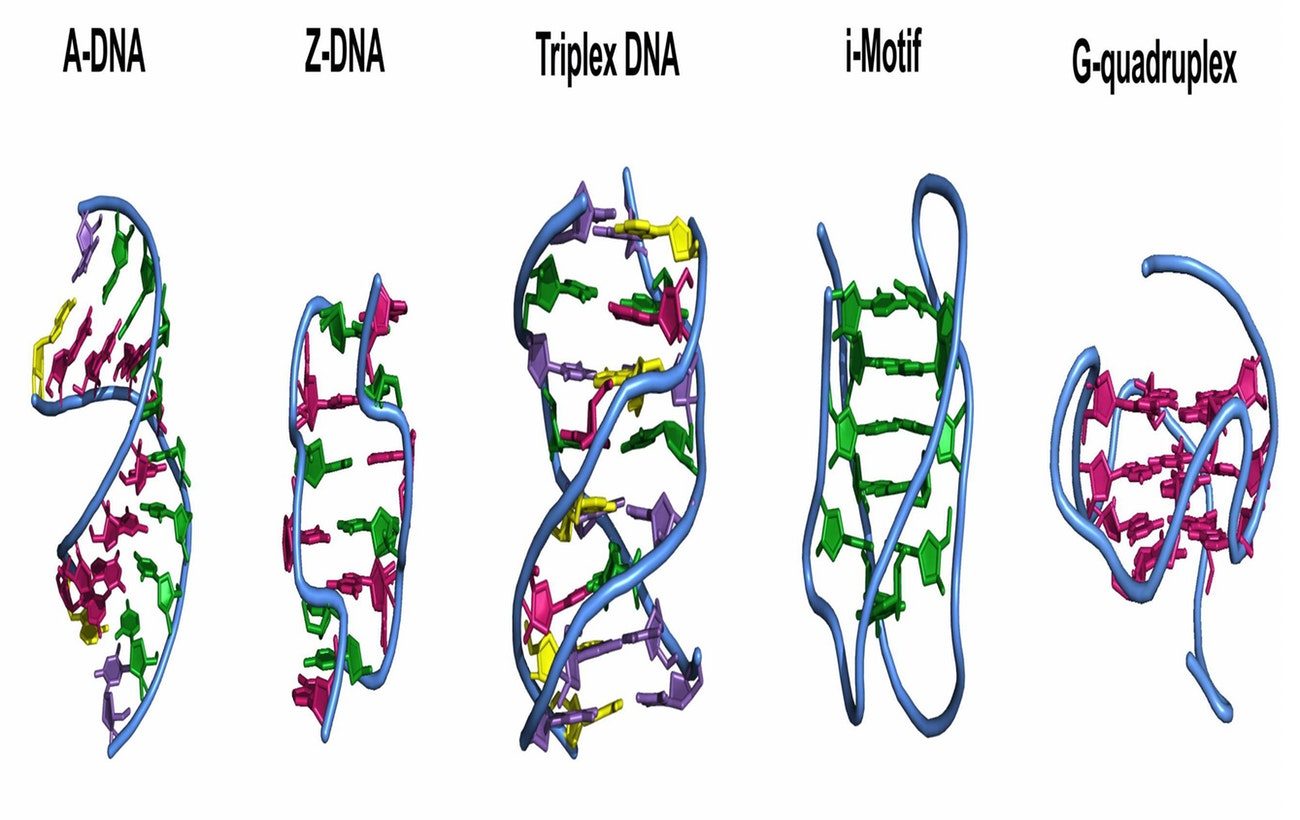
© Dinger et alArtist's impression of the various shapes of DNA to be found.
A team of Australian researchers at Sydney's Garvan Institute
has identified a knotty version of DNA, known as an I-motif, that appears within DNA when it is actively being read. The findings appear in the journal Nature Chemistry.According to
John Mattick, the out-going director of the Garvan, who was not involved in the research, "This shows another level of dynamic regulation of the DNA code. It's not just a twisted railway track; it's got signposts and sidings along the way."
Just like the ones and zeroes in computer code, geneticists have thought since 1953 - the year that James Watson and Francis Crick
discovered the double-helix - that the information in DNA was strictly linear.
But over the past couple of decades, mischievous scientists have succeeded in showing that DNA structures other than the elegant helix appear under the microscope. All in all, there are five besides the "standard" shape, known as B-DNA: A-DNA, Z-DNA, triplex DNA, G quadruplex, and I-motif DNA.
While most of the odd fellows have only been observed in the artificial conditions, the G quadruplex was
recently detected in human cells.
To explore whether I-motif DNA existed in living cells, the Garvan team developed an antibody that would bind to it and no other form.
Injecting the antibody into a variety of cells, the researchers found that the it zeroed in on several targets across the cells - mostly in parts that do not code for proteins - including the regulatory regions that switch genes on and off (known as promotors) and the chromosome tips (called telomeres).
The I-motif was not detectable all the time. Rather, the antibody, visible because of its green fluorescent tag, came and went as the cells progressed through their cycles of division. However, they were most visible in the late Gap 1 phase, when cells are actively reading their DNA in order to synthesise mRNA and proteins prior to dividing.
"What excited us most is that we could see the green spots - the I-motifs - appearing and disappearing over time," says Mahdi Zeraati, the first author of the paper. "It seems likely that they are there to help switch genes on or off."
Rather shockingly, the I-motif doesn't just disobey the structural rules, it also disobeys the normally strict base-pairing rules for DNA, which hold that adenine always binds to thymine, and cytosine always hooks up with guanine. In this instance, the structure is formed by two cytosines pairing up.
Given that 98% of the genome does not code for proteins, on to decode this information. "Its probably not one dimensional but three or four dimensional", says Mattick.
As senior author Marcel Dinger puts it, "These findings will set the stage for a whole new push to understand what this new DNA shape is really for."

Reader Comments